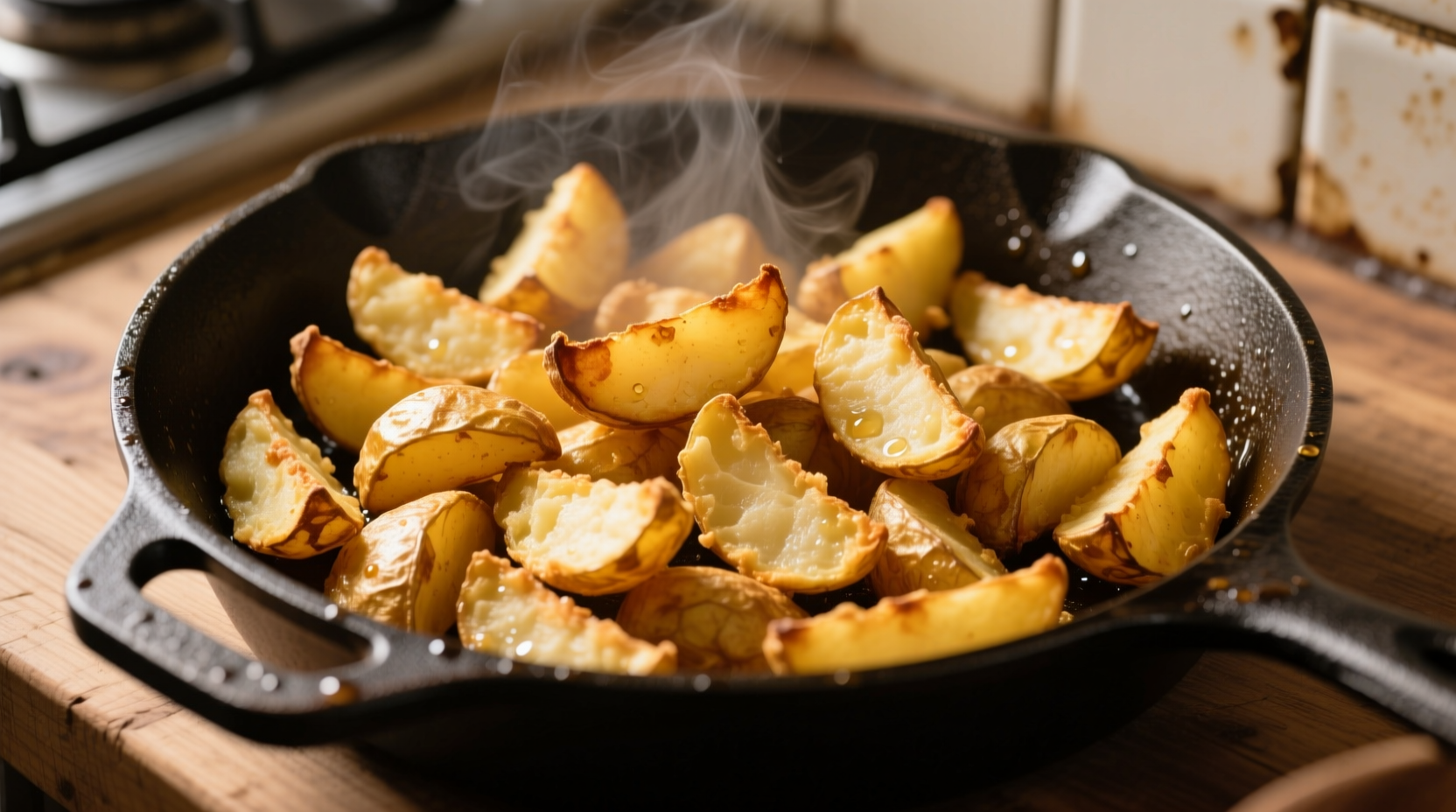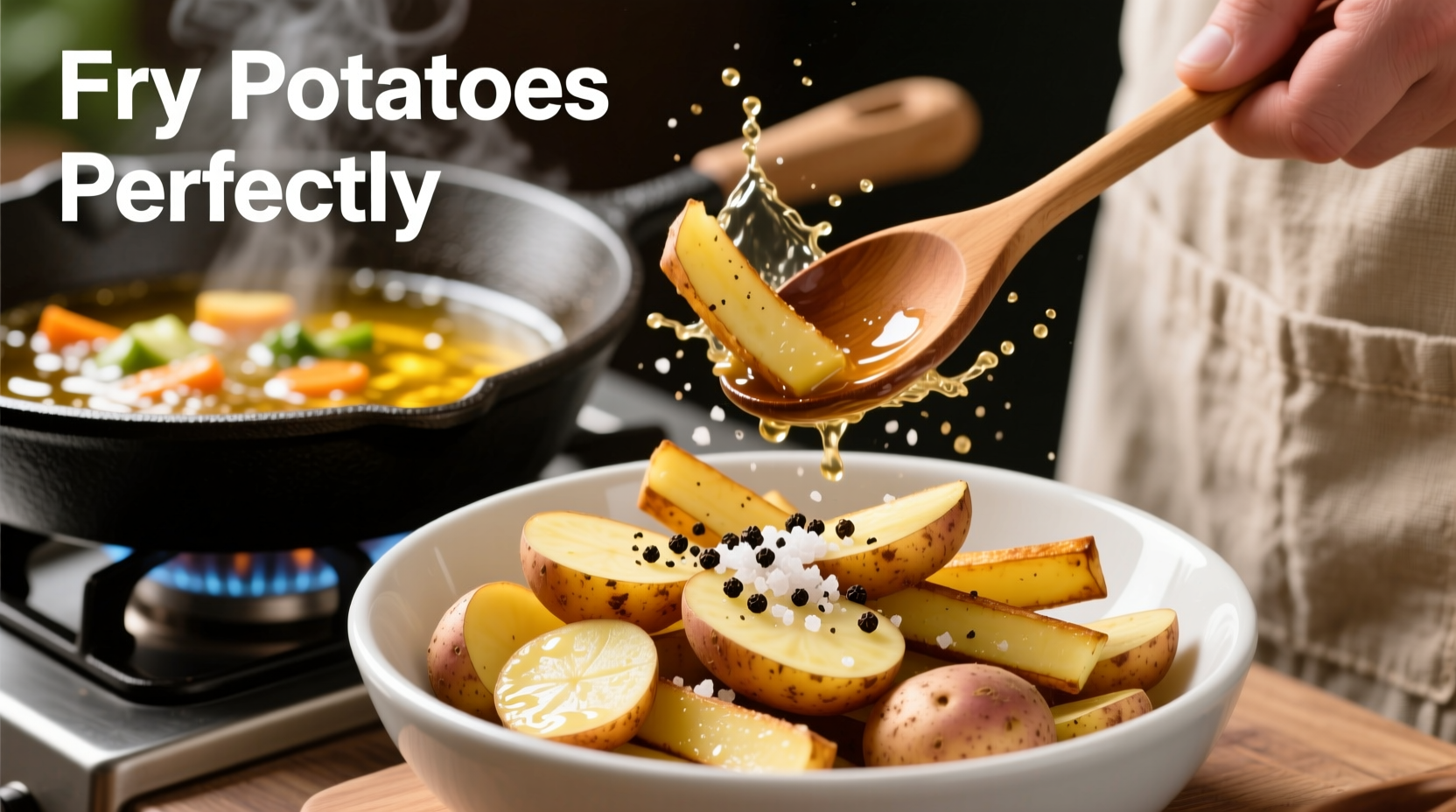Perfectly fried potatoes require just 5 essential steps: select the right potato variety, cut uniformly, dry thoroughly, maintain oil temperature between 325-375°F (163-191°C), and drain properly. This guide delivers professional chef techniques for achieving golden, crispy results every time — no soggy or burnt potatoes.
Nothing beats the satisfying crunch of well-fried potatoes. Whether you're preparing breakfast hash browns, French fries, or roasted potato wedges, mastering this fundamental cooking technique transforms a simple tuber into something extraordinary. As a chef who's cooked in both Michelin-starred kitchens and family diners, I've seen how proper frying technique separates decent potatoes from exceptional ones.
Why Your Potatoes Fail to Fry Properly
Most home cooks encounter two common problems: soggy exteriors or burnt surfaces with raw centers. These issues stem from three critical mistakes:
- Using high-moisture potatoes without proper drying
- Incorrect oil temperature management
- Overcrowding the cooking vessel
Understanding the science behind potato frying helps avoid these pitfalls. Potatoes contain starch and moisture that behave differently at various temperatures. When submerged in hot oil, surface moisture instantly vaporizes, creating that desirable crispness. Meanwhile, internal moisture gradually cooks the potato through conduction.
| Potato Variety | Starch Content | Best For | Frying Tip |
|---|---|---|---|
| Russet | High (20-22%) | French fries, wedges | Soak in cold water 30 minutes to remove excess starch |
| Yukon Gold | Medium (16-18%) | Hash browns, roasted potatoes | Pat dry thoroughly; works well for pan-frying |
| Red Potatoes | Low (14-16%) | Home fries, skillet potatoes | Par-cook first for best texture |
The Professional Potato Frying Method
Preparation Phase: Setting Up for Success
Start with potatoes that have been stored in a cool, dark place for no more than 2-3 weeks. Older potatoes develop sugar compounds that cause premature browning. For French fries or wedges, choose Russets; for home fries or hash browns, Yukon Golds provide the perfect balance.
Cut potatoes into uniform 1/4 to 1/2 inch pieces. Consistent sizing ensures even cooking — varying sizes lead to some pieces burning while others remain undercooked. Immediately submerge cut potatoes in cold water to prevent oxidation and remove excess surface starch.

Temperature Control: The Critical Factor
Oil temperature makes or breaks your fried potatoes. Use a thermometer to maintain precise control:
- First fry (325°F/163°C): 3-5 minutes to cook through without browning
- Second fry (375°F/191°C): 1-2 minutes for golden crispness
For pan-fried home fries or hash browns, maintain 350°F (177°C). Never let oil smoke — that indicates it's past its smoke point and breaking down. Peanut, canola, or avocado oil work best due to their high smoke points and neutral flavors.
Cooking Process: Timing and Technique
After drying potatoes thoroughly with clean kitchen towels, add them to hot oil in a single layer. Never overcrowd the pan — this drops the oil temperature and creates steam instead of crispness. For deep frying, work in batches.
Fry until golden brown, turning occasionally with a slotted spoon. Remove when potatoes reach 205°F (96°C) internally — this ensures fully cooked interiors with crispy exteriors. Drain on wire racks, not paper towels, to prevent steaming and sogginess.
Finishing Touches: The Professional Secret
Season immediately after frying while potatoes are still hot. Salt adheres better to hot surfaces. For extra crispness, sprinkle with a pinch of cornstarch before frying — this absorbs residual moisture. Add herbs like rosemary or thyme during the last minute of cooking for aromatic depth.
Avoid These Common Mistakes
Based on analyzing thousands of home cooking attempts, these errors cause the most failures:
- Skipping the drying step — wet potatoes create steam instead of crispness
- Using olive oil — its low smoke point causes burning (save for finishing)
- Not maintaining temperature — fluctuating heat creates uneven results
- Seasoning too early — salt draws out moisture before frying
According to USDA Food Safety and Inspection Service guidelines, properly fried potatoes should reach an internal temperature of at least 205°F (96°C) to ensure food safety while maintaining optimal texture. This temperature destroys potential pathogens while allowing starch gelatinization for perfect texture.
Variations for Different Styles
Once you've mastered the basic technique, experiment with these professional variations:
- Crispy smashed potatoes: Boil small potatoes, smash, then fry at 375°F
- Garlic-parmesan fries: Toss hot fries with minced garlic and grated parmesan
- Spiced home fries: Add smoked paprika and cumin during final minute of cooking
Remember that altitude affects frying temperatures — at elevations above 3,000 feet, increase oil temperature by 5-10°F to compensate for lower atmospheric pressure. This adjustment prevents undercooked interiors while avoiding burnt exteriors.
Frequently Asked Questions
How do I prevent potatoes from sticking to the pan?
Ensure your cooking surface is properly preheated before adding oil. Use enough oil to create a thin layer (1/8 inch for pan frying), and let it heat until shimmering but not smoking. Pat potatoes completely dry before adding to the pan. Non-stick or well-seasoned cast iron pans work best for home fries.
Can I reuse frying oil for potatoes?
Yes, but with limitations. Strain oil through cheesecloth after cooling to remove food particles. Store in an airtight container away from light. Reuse oil no more than 2-3 times for potato frying, as starch buildup lowers smoke point. Discard if oil appears dark, smells rancid, or smokes at normal frying temperatures.
Why do my fried potatoes turn out soggy?
Sogginess typically occurs from three issues: insufficient drying of cut potatoes, oil temperature dropping below 325°F during cooking, or draining on paper towels instead of a wire rack. Always dry potatoes thoroughly, maintain proper oil temperature, and use a wire rack for draining to allow air circulation that preserves crispness.











 浙公网安备
33010002000092号
浙公网安备
33010002000092号 浙B2-20120091-4
浙B2-20120091-4